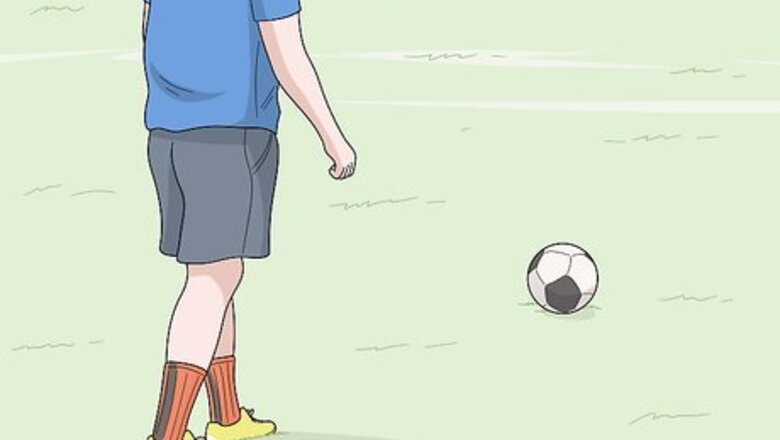
views
Approaching the Ball

Set the ball up for your dominant foot. During a free kick when you strike a stationary ball, angle yourself to prepare to kick the ball with your stronger foot. Otherwise, when dribbling with the ball, push the ball ahead of you and towards your kicking foot. Shift yourself and the ball to get the proper kicking angle. For example, when kicking the ball with your right foot, shift your body to the left or while running push the ball ahead so it is in front of your right big toe. Contacting the ball slightly to the right or left of center will generate full contact with less sway than a strike dead-center.

Take short strides. As you approach the ball for the kick, shorten your strides. This is simplest to do when the ball is set and can be seen when professional players take free kicks. During a run, quickly shorten your strides right before you choose to shoot for more power and control.
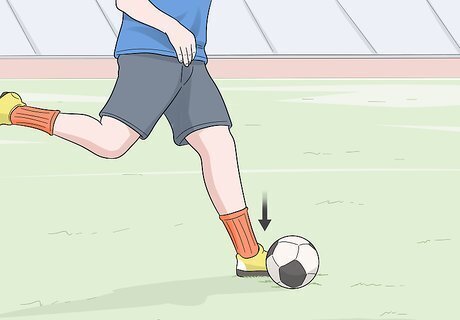
Plant your non-kicking foot next to the ball. Continue running until you reach the ball. The foot you’re not using to strike the ball needs to be set right next to the ball, not behind it. This brings your body over the ball. If you stay behind the ball, you will have a tendency to lift the ball and miss the target or hit the ball with your toe.

Point your non-kicking foot in the direction you want the ball to go. As you plant your non-kicking foot, point it in the direction you want the ball to go. Pointing your foot the wrong way makes kicking feel awkward, prevents you from maximizing your power, and can send the ball in a direction you did not intend for it to go. Pointing your foot towards the ball will cause your foot to get in the way. Point too far to the side and you’ll lose control of the ball.
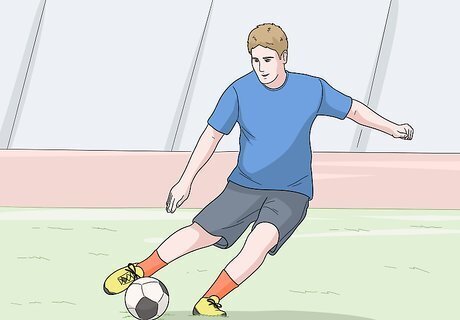
Look down at the ball. Right before you kick it, glance down at the ball. Focus on kicking with the proper technique instead of generating power or watching the spot you want the ball to hit. This will help you keep your body over the ball and prevents you from lifting the ball.
Kicking the Ball

Relax your body. Many people focus too much on generating power. When you do this, you force your shot, losing control of the ball and losing power because of a poor strike. Instead, let your body drop so that your shoulders are squared and the only tension is in your ankle. Sometimes players shake out tension before taking a free kick.

Bring your leg back. Bend your non-kicking knee slightly as you draw your kicking leg back. Don’t go too far back or else you won’t be able to swing your leg forward quickly to get the ball away with accuracy. Large swings are best for long-distance kicks.

Point your toes towards the ground. When you move your kicking leg backward, angle your toes downwards. This causes your ankle to lock.
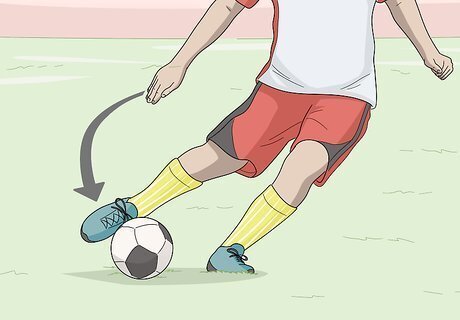
Bring your leg forward. Whip your leg forward towards the ball. Keep your foot angled downwards as you do this. Right before you strike the ball, extend your foot to unleash the power stored in your leg
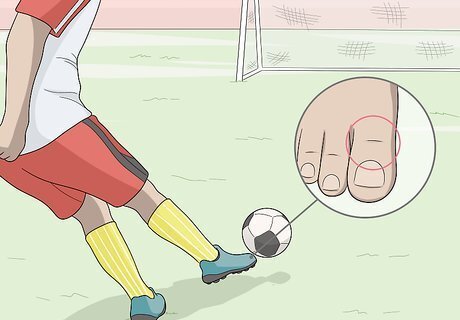
Make contact with the knuckle of your big toe. Coaches tell you to kick the ball with the laces of your foot. Technically, you are kicking below that. The knuckle is where your big toe connects to the rest of your foot. This large bone creates force when the area just above it strikes the ball. Watch the ball as your foot connects with it. Never kick with your toes. This not only generates less power and control, but it can hurt your toes. Hit the ball halfway up from the ground for maximum power. Strike further to the sides for more spin.
Following through Your Shot

Swing through the ball. Don’t stop when your foot hits the ball. Move your foot through the ball as it leaves your foot. This ensures your leg’s momentum is fully expended on the ball. Your foot will raise up at the end of the swing’s arc.

Land on your kicking foot. Bring your foot down and plant it on the ground first before you try to move. That way the momentum of your swing is maximized and you stabilize yourself as you try to move.
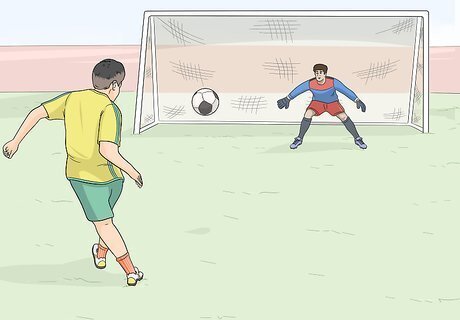
Follow up your shot. If possible, run after your shot. Putting pressure on your opponent may cause them to deflect or drop the ball, giving you a chance to follow your shot and potentially score.

















Comments
0 comment